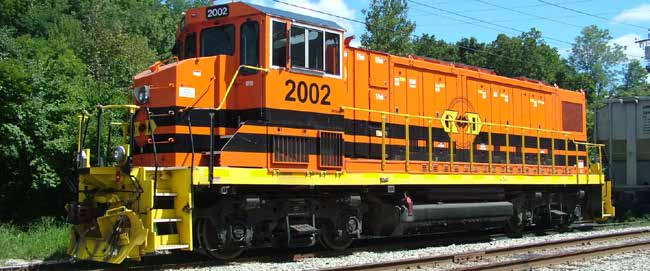Primer for Improved Urban Freight Mobility and Delivery
|
||
Key Accomplishments
|
In the State of Ohio, 38 of 88 counties are currently or have previously been designated as non-attainment or maintenance areas for the air pollutants ozone or PM2.5. These counties include the cities of Columbus, Cleveland, and Cincinnati. The State of Ohio administers a statewide grant program to help reduce emissions of air pollutants from mobile sources in these counties. This program, known as the Diesel Emissions Reduction Grant (DERG) program, provides funding to replace, repower, or retrofit older diesel-powered vehicles and vessels, including freight vehicles. It also helps pay for the installation of idle-reduction equipment.
Since its inception in 2008, the DERG program has awarded more than $47.2 million for clean-diesel projects and leveraged another $20.4 million in local matching funds. Another $8.8 million of project selections are currently under development. With annual funding of about $10 million, the DERG program is one of the largest statewide clean-diesel programs funded by the Federal Congestion Mitigation and Air Quality Improvement (CMAQ) program.
The Federal CMAQ program is a flexible funding source for transportation projects and programs that help improve air quality and reduce congestion. Since 2008, the State of Ohio has dedicated a significant portion of its CMAQ funding to its DERG program. Eligible fleets include on-road vehicles and some construction vehicles, as well as certain locomotives and marine vessels. Other eligible vehicle types include school and transit buses.
Participating fleets can be either publicly or privately owned, but, in keeping with Federal CMAQ regulations, private-sector applicants must have a public agency sponsor. Of the $12.8 million awarded in 2016, $3.4 million (27 percent) went to private fleet owners. Project selections included the replacement of 73 diesel-powered trucks and the repowering of two tugboats operating on the Ohio River. The largest award, at nearly $1 million, went to a Class I railroad for equipment to reduce engine idling by 35 locomotives operating at five rail yards in the Cleveland, Columbus, and Toledo areas.
Funding recipients must provide at least a 20-percent funding match and must use technology that has been verified to reduce emissions. In addition, the fleet owner must operate the equipment purchased or modified with DERG funding at least 65 percent of the time within Ohio's CMAQ-eligible counties. Recipients must also adhere to other Federal requirements for recipients of CMAQ funds, including following public procurement processes.

The DERG program provided funding to repower this switching locomotive, which operates near Cincinnati, OH. The locomotive's existing single diesel engine was replaced with three generator-set diesel engines, each of which runs only when its power is needed. Source: Ohio Rail Development Commission.
Ohio's DERG program has benefited from effective interagency collaboration. The Ohio Environmental Protection Agency (Ohio EPA) is the lead agency, but the Ohio Department of Transportation (Ohio DOT) is the formal conduit for the CMAQ funds and is extensively involved in the program's operation. The two agencies have worked out complementary roles that make the most of their respective areas of expertise. The Ohio EPA conducts outreach for the program and assists applicants in preparing their proposals. Ohio EPA also coordinates the activities of the DERG program with other clean-diesel programs that it administers. Ohio DOT helps funding recipients understand and comply with the requirements for the proper use of CMAQ funds.
A committee with staff from both agencies reviews and scores grant applications. The primary criterion for project selection is the cost-effectiveness of the projected reductions in emissions of PM2.5 and nitrogen oxides (NOx), a precursor to ground-level ozone. However, the geographic and transportation modal distribution of awards is also a factor in the project selection process. As a further demonstration of Ohio interagency cooperation, two additional State entities, the Ohio Rail Development Commission and the Ohio Air Quality Development Authority, serve as public agency sponsors for many of the private-sector entities that receive DERG funding. The Ohio Division Office of the FHWA provides ongoing assistance in determining project eligibility, as well as in processing Buy America waivers and sole-source procurement requests.
Recent program improvements include the use of an online, interactive application form beginning with the 2016 grant cycle. According to Ohio DOT staff, the online version has been well received and has made the review of applications much easier.
Dave Moore, Ohio DOT, Statewide Planning Manager, (614) 466-0754, dave.moore1@dot.ohio.gov
Carolyn Watkins, Ohio EPA, Chief, Office of Environmental Education, (614) 644-3768, carolyn.watkins@epa.ohio.gov
|
United States Department of Transportation - Federal Highway Administration |
||